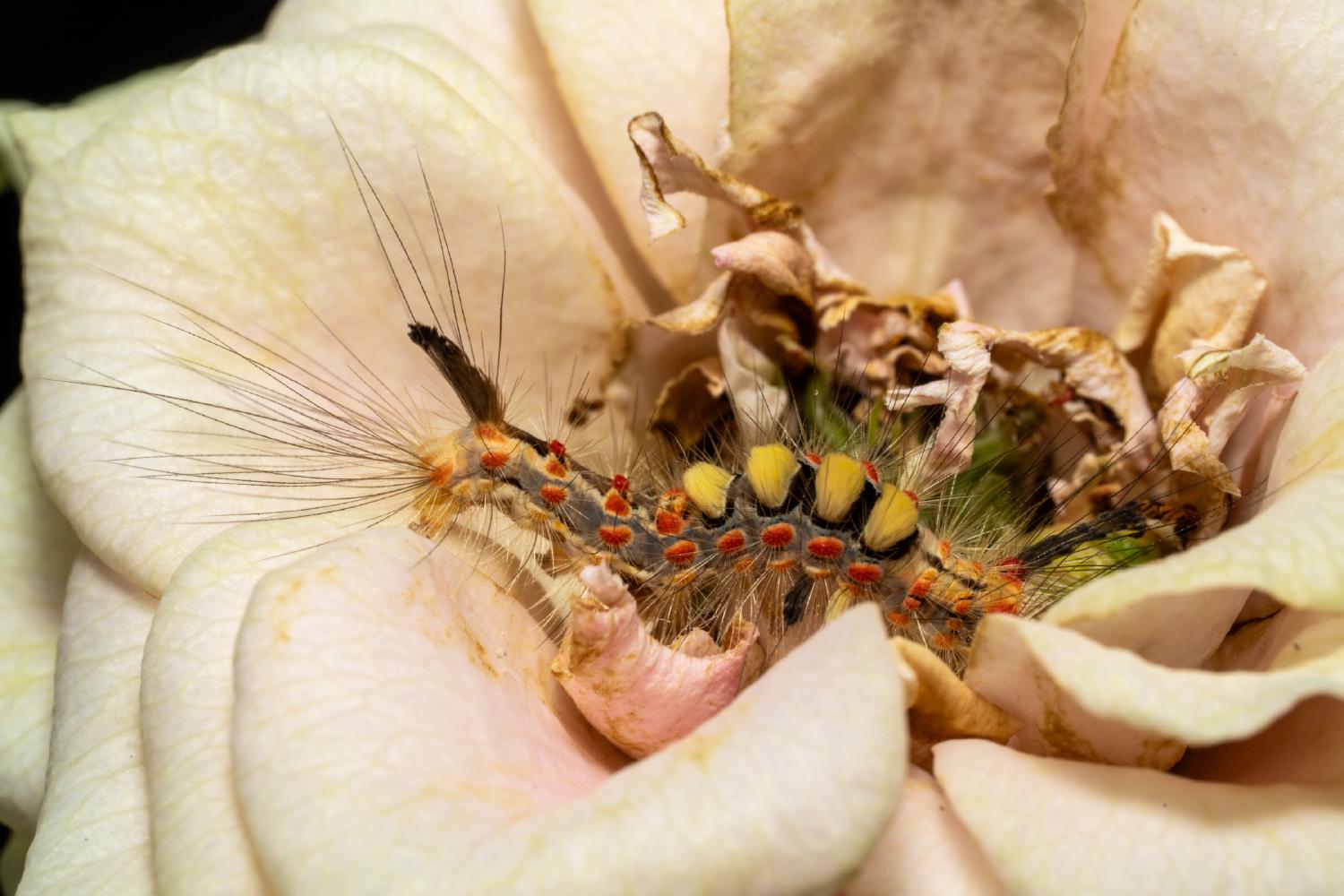Spongy Moth
Lat. “Lymantria dispar“
species
of order
“Butterflies and Moths“
1 species
The etymology of the term “gypsy moth” is not definitively known, but it has been in use since 1908. Moths of the Lymantriinae subfamily are also known as tussock moths due to the tufts of hair on their caterpillars. The name Lymantria dispar comes from two Latin-derived words, with Lymantria meaning “destroyer” and dispar meaning “to separate” in reference to sexual dimorphism. The term “gypsy moth” has been removed from the Entomological Society of America’s list due to its offensiveness, and a new common name, “spongy moth,” has been proposed based on the French name for the species. The North American and European populations of Lymantria dispar are considered the same subspecies. Several species of parasitoids and predators have been introduced to North America as biological control agents for the moth, with microbial pathogens being the most effective control agents.
Etymology
The etymology of “gypsy moth” is not conclusively known; however, the term is known to have been in use as early as 1908.Moths of the subfamily Lymantriinae are commonly called tussock moths due to the tussock-like tufts of hair on the caterpillars.: 9 The name Lymantria dispar is composed of two Latin-derived words. The generic name Lymantria means ‘destroyer’. The species epithet dispar means ’to separate’ in Latin; it refers to the sexual dimorphism observed in the male and female imagines.: 9 In July 2021 the Entomological Society of America decided to remove the name “gypsy moth” from its Common Names of Insects and Related Organisms List as “hurtful to the Romani people”, since gypsy is an ethnic slur. In January 2022, the new common name “spongy moth” was proposed, as a translation from the French name “spongieuse” for the species, referring to the sponge-like egg masses laid by L. dispar.
Taxonomy
The North American and European Lymantria dispar moths are considered to be the same subspecies, usually referred to as Lymantria dispar dispar.: 6 Confusion over the classification of species and subspecies exists. The U. S. Department of Agriculture defines the Asian subspecies as “any biotype of L. dispar possessing female flight capability”,: 5 despite L. d. asiatica not being the only accepted subspecies that is capable of flight.: 6 Traditionally, L. dispar has been referred to as “gypsy moth” even when referring to Japanese, Indian and Asiatic populations.: 5
Biological pest control measures
After the species was accidentally introduced in North America by artist and astronomer Étienne Léopold Trouvelot in 1869, several species of parasitoids and predators have been introduced as biological control agents in attempts to help control this moth. Beginning in the late 1800s, at least 10 species have become established in this way, but for nearly a century there was little regulation or research on the effectiveness or non-target effects of these introduced natural enemies. Several were generalists that offered little control of L. dispar and attacked other native insects. One such species is the tachinid fly Compsilura concinnata, which attacked many other host species (over 180 known hosts documented), decimating many of the large moth species previously abundant in the Northeast. Another is the encyrtid wasp Ooencyrtus kuvanae which attacks L. dispar eggs but is not strictly host specific, and also parasitizes the eggs of other Lepidoptera species. The most effective control agents are microbial pathogens: a virus (LdmNPV), and a fungus (Entomophaga maimaiga).
External links
Media related to Lymantria dispar at Wikimedia Commons Gypsy moth on UKmoths Bugguide.net Species Profile: European Gypsy Moth (Lymantria dispar) from the National Invasive Species Information Center, United States National Agricultural Library
Ancestry Graph
Further Information
Copyright

This article uses material from the Wikipedia article Lymantria dispar the free encyclopedia Wikipedia which is released under Creative Commons Attribution-ShareAlike 4.0 International License). On Wikipedia a list of authors is available.
